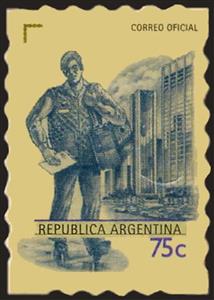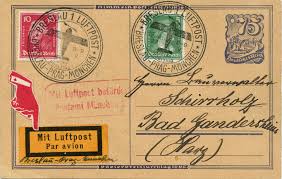Stamp: Postman 1990 (Argentina 1999)
Postman 1990 (Argentina 1999)
24 May (Argentina ) within release Postmen goes into circulation Stamp Postman 1990 face value 75 Argentine centavo
| Stamp Postman 1990 in catalogues | |
|---|---|
| Gz (Cefiloza): | Gz: AR 2416D |
Stamp is vertical format.
Corners at 90°. Inscriptions in black. Coarse screened printing (big rosette)Also in the issue Postmen:
- Stamp - Postman 1990 face value 75;
- Stamp - Postman 1920 face value 25;
Stamp Postman 1990 it reflects the thematic directions:
Postal history is the study of postal systems and how they operate and, or, the study of the use of postage stamps and covers and associated postal artifacts illustrating historical episodes in the development of postal systems. The term is attributed to Robson Lowe, a professional philatelist, stamp dealer and stamp auctioneer, who made the first organised study of the subject in the 1930s and described philatelists as "students of science", but postal historians as "students of humanity". More precisely, philatelists describe postal history as the study of rates, routes, markings, and means (of transport).
The mail or post is a system for physically transporting documents and other small packages; or, the postcards, letters, and parcels themselves. A postal service can be private or public, though many governments place restrictions on private systems. Since the mid-19th century national postal systems have generally been established as government monopolies with a fee on the article prepaid. Proof of payment is often in the form of adhesive postage stamps, but postage meters are also used for bulk mailing. Modern private postal systems are typically distinguished from national postal agencies by the names "courier" or "delivery service". Postal authorities often have functions other than transporting letters. In some countries, a postal, telegraph and telephone (PTT) service oversees the postal system, in addition to telephone and telegraph systems. Some countries' postal systems allow for savings accounts and handle applications for passports.


